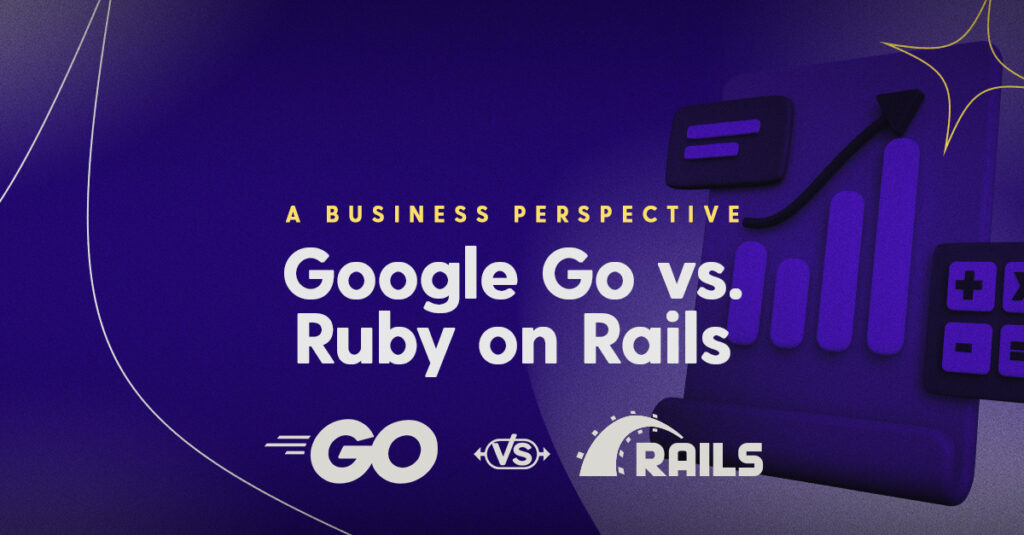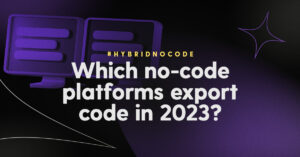
What is Google Firebase? Everything you Need to Know in 2023
What is Google Firebase? Everything you need to know in 2023 By James Virgo App developers have mixed feelings when it comes to any technology.

Choosing a tech stack for a new project is a totally overwhelming experience.
Ultimately, you need to choose a tech stack that aligns with your business goals. In this article we take a look at two of the most often discussed languages: Google Go vs Ruby on Rails. And, we consider which is better, from a business perspective.
Note, Google Go is also known as Go & Golang (Go Language).
When building tech it’s important to choose a programming language that supports low-latency & high-throughput. But what exactly do “low-latency” & “high-throughput” actually mean?
Imagine a restaurant: low latency is like getting your food served promptly, while high throughput ensures you can serve many customers without slowing down. In tech terms, low latency means minimal delay in actions (like fetching a list of properties to display), & high throughput ensures many users can access your application simultaneously without causing bottlenecks or slowdowns.
Google Go was designed for high performance applications. This makes it a great choice when developing systems that require low-latency & high-throughput. It does this with Goroutines. You can think of Goroutines like workers who can perform multiple tasks simultaneously without waiting for the one to finish before starting another one. This ensures faster & more efficient work. Furthermore, Go also has efficient garbage collection mechanisms which help to efficiently manage memory & prevent memory leaks.
In contrast, Ruby on Rails relies on a more traditional, single-task approach, which can lead to slower performance when dealing with many simultaneous requests, like a traffic jam during rush hour. So, Go’s concurrency model is like a well-orchestrated team, while Ruby on Rails is akin to a single worker juggling multiple tasks, potentially causing delays.
Ruby on Rails emphasizes developer speed & follows the convention over configuration principle. This means that Ruby on Rails comes with sensible defaults required to jumpstart your project. This means that Ruby on Rails can save time by allowing developers to focus on what is unique to the project rather than going through routine setup. Ruby on Rails also has an extensive ecosystem of gems (packages of pre-built functionality) & plugins that enable rapid development by leveraging existing solutions.
In contrast, Go has a steeper learning curve however it also offers a type system & strict syntax which results in more reliable & maintainable code in the long run. This is an important consideration since it makes adding new features faster in the future. Furthermore, since 2023, there are hybrid no-code tools such as Dittofi & generative AI solutions such as co-pilot that can help developers write Go code much faster than Ruby on Rails.
Ruby on Rails has a mature & vibrant ecosystem of resources, plugins & libraries. There are also a lot of developers who know Ruby on Rails. However, in recent years there are some signs that Ruby on Rails is declining in popularity. For example, the number of Ruby on Rails jobs has been steadily declining since 2015.
According to Linkedin in “2015, Ruby on Rails was the second most in-demand web development framework, but by 2018 it had fallen to fourth place)”. Similarly, the number of Rails developers has been declining since 2016. There are also signs that major companies are losing interest in Ruby on Rails. For example, Airbnb recently announced that they’re moving away from Ruby on Rails in favor of React, Node.js & Google Go.
In contrast, Google Go is currently one of the fastest growing programming languages in the software industry. For example, in 2018, GitHub reported that Google Go was the fastest growing language in the industry. This fast growth means that there are now a lot of developer tools specifically focused on Go & the number of Go developers has increased. It is now easy to find low cost & highly talented Go developers to help scale your team.
Since Go is the language of choice when looking to develop highly scalable systems, more & more companies are switching to Go in order to stay competitive. As such, the demand for Go developers is now increasing. Furthermore, because of the power of Go, the language tends to attract more experienced developers who are looking for new solutions to solve complex problems. In contrast, Ruby on Rails has higher demand today for Google Go, although this is mainly a result of the fact that it has been around for a longer time.
If you’re looking to build a team of Go developers, you can also consider using a hybrid no-code tool such as Dittofi, that enables coders & no-coders to develop high quality Google Go code through a visual interface. For instance, a trained Dittofi developer can write up to 7000 lines of Google Go code per day compared to traditional coders who generate up to 200 lines per day.
Ruby on Rails’ main use case is for building web applications, particularly for startups & prototyping. It excels in applications that prioritize speed of development & convention driven approaches. Go on the other hand is often chosen for building scalable web services, microservices, and backend systems that require high performance and efficient resource utilization. In recent years more & more companies have adopted Google Go, especially with hybrid no-code tools such as Dittofi & generative AI solutions such as co-pilot making it faster & easier to write Go code.
Choosing between Go & Ruby on Rails depends on your business requirements, project scope, & long-term business goals. For companies that prioritise performance, scalability & low-latency, Go is a better choice. On the other hand, if you’re looking to develop a fast application using code, Ruby on Rails is an excellent fit because of its mature ecosystem, resources, libraries & convention driven approach.
All that being said, since 2023, writing Google Go has never been faster, with hybrid no-code tools such as Dittofi & generative AI solutions such as co-pilot offering unprecedented speed of code development. All of this has led to a decline in the number of companies using Ruby on Rails.
If you’d like to try building your first Google Go application, why not start with one of Dittofi’s full stack React & Google Go templates? Or alternatively schedule a call with one of our team & learn how you can turn your team into a high performing Google Go shop using hybrid no-code.

What is Google Firebase? Everything you Need to Know in 2023
What is Google Firebase? Everything you need to know in 2023 By James Virgo App developers have mixed feelings when it comes to any technology.

Which no-code platforms export code in 2025?
Which no-code platforms export code in 2023? By James Virgo No-code is great for rapid app development, but no-code has been proven to be shockingly

Why you should use Google Go (2025)
Why you should use Google Go (2023) By James Virgo Google Go has become the go to app development language for startups, SMEs & enterprises

⸺ Receive the latest news
Get notified about new articles and events